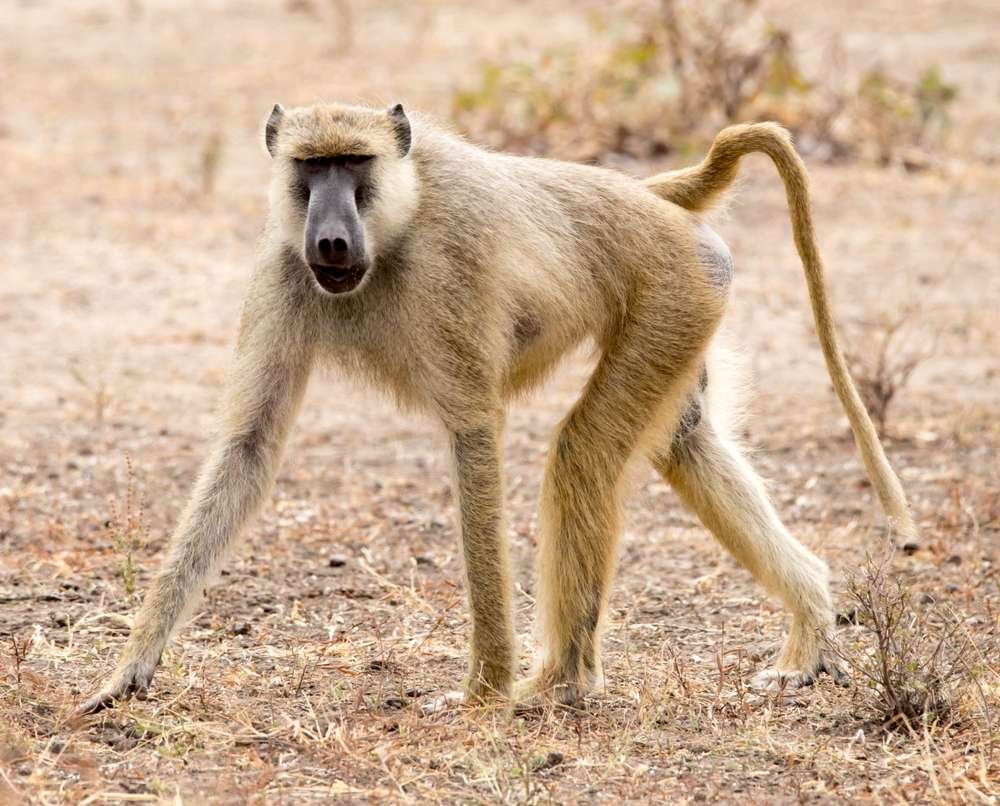Yellow Baboon
( dog headed baboon )
- Papio cynocephalus
- IUCN Status: Least Concern
- Trend: increasing

- Kingdom: Animalia
- Phylum: Chordata
- Class: Mammalia
- Order: Primates
- Suborder: Haplorhini
- Family: Cercopithecidae
- Genus: Papio
Share:
General Information
The yellow baboon has also been called the dog-headed baboon for obvious reasons. It is widespread and thriving across Zambia
Fun Facts!
Description
- Length: up to 84 cm
- Lifespan: up to 30 yrs
Ecology and Behaviour
Yellow baboons use at least ten different vocalizations to communicate. When traveling as a group, males will lead, females and young stay safely in the middle, and less-dominant males bring up the rear. A baboon group’s hierarchy is a serious matter, and some subspecies have developed behaviors intended to avoid confrontation and retaliation. For example, males may use infants as a kind of “passport” or shield for safe approach toward another male. One male will pick up the infant and hold it up as it nears the other male. This action often calms the other male and allows the first male to approach safely
Conservation
The yellow baboon is one of the most successfully thriving primate and is widespread. They do not rank among threatened animal species.
Distribution and Habitat
Yellow baboons inhabit savannas and light forests in southern and eastern Africa. They are diurnal, terrestrial, and live in complex, mixed-gender social groups of 8 to 200 individuals per troop. Like all other baboon species, they are omnivorous, with a preference for fruits; they also eat plants, leaves, seeds, grasses, bulbs, bark, blossoms and fungi, as well as worms, grubs, insects, spiders, scorpions, birds, rodents and small mammals. All species of baboons are highly opportunistic feeders and will eat virtually any food they can find.
Interaction with humans
The baboon’s major predators are humans. Knowing that humans can easily kill or injure them when they are in trees, baboons usually escape through undergrowth. Many troops have become a suburban menace in their search for food, overturning garbage cans, and literally breaking into cars and houses where they cause much damage. These troops can be dangerous and aggressive, and they will even steal food directly from people. These negative encounters have resulted in the baboons being hunted and poisoned by frustrated local residents. A dominant individual (usually the alpha male) leads the group to easily monopolised resources. The group usually follows, even though many subordinate members cannot gain access to that particular resource.
No donation to this project yet.
| M | T | W | T | F | S | S |
|---|---|---|---|---|---|---|
| 1 | 2 | 3 | 4 | 5 | 6 | 7 |
| 8 | 9 | 10 | 11 | 12 | 13 | 14 |
| 15 | 16 | 17 | 18 | 19 | 20 | 21 |
| 22 | 23 | 24 | 25 | 26 | 27 | 28 |
| 29 | 30 | 31 | ||||


